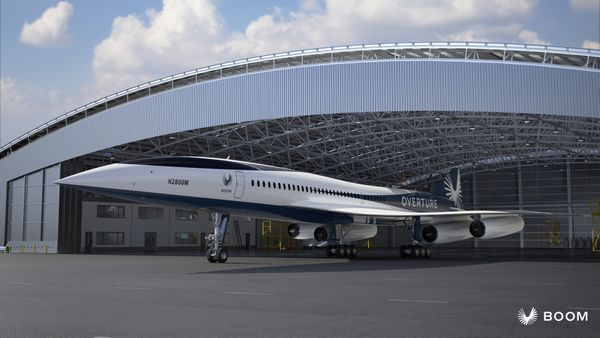
The world's first scheduled airmail flight began as a triangle between three large cities: Washington D.C., Philadelphia, and New York City. It helped facilitate increased connectivity within the North-Eastern United States by revolutionizing communication, promoting economic growth, and bringing people closer together.
Early Beginnings
Although airmail service officially began on May 15, 1918, it was not the first time that mail was flown between cities. Before the U.S. post office formally established domestic U.S. airmail, the government-sponsored experimental flights between 1911 and 1918.

After confirming the first airmail flight and observing its success, more routes were added in 1919 and 1920 from New York to Chicago and New York to San Francisco, respectively. Initially, army pilots flew mail, but once the post office took over, newly hired civilian pilots took over airmail operations.
It began as a hazardous operation, as pilots flew with open cockpits in unpredictable weather. Since mail is delivered in all kinds of weather, pilots were forced to deal with all the elements: wind, rain, ice, snow, and extreme temperatures.

In fact, according to one veteran airmail pilot, there was a 50% chance of engine failure for every flight! However, as aircraft weaknesses and flaws were revealed and corrected, designs were improved, and less failure was experienced.
Airmail Contract Shift
Starting in 1926, airmail service shifted from government to commercial operations, thanks to the Kelly Act. The Kelly Act was entitled as “an act to encourage commercial aviation and to authorize the Postmaster General to contract for airmail service.”

This allowed the U.S. Post Office to create contracts with commercial airlines to fly new routes connecting with the original three government-operated airmail services. Such routes included Ford's new routes from Detroit to Cleveland and Detroit to Chicago. Just one year later, all airmail routes were flown commercially.
These contracts were initially based on competitive bids to take over the government's original routes. Operators who won the contracts were compensated at no more than 80% of airmail revenue.

However, this changed on July 1, 1926, to a compensation rate based on the total weight of mail carried on each flight, similar to what we have today for our air cargo operations. By October 1975, distinct airmail service ended in the United States.
Furthermore, the compensation rate structure was discontinued by May 1, 1977. By 1995, USPS began international first-class mail service without additional charge while eliminating sea and land-based services. Additionally, the words "air mail" ceased to exist on U.S. postage stamps.
Lasting Impacts

Today, we still feel the impact of the world's first airmail service, which had humble beginnings in 1918. The U.S. Post Office's purpose in developing this service successfully demonstrated the feasibility of commercial aviation.
With increased connectivity and technological improvements for aircraft, airmail service laid the foundation for our current air service industry, with millions of people and cargo being transported globally daily.
VIDEO: Turkish C-130 Crash Near Georgia-Azerbaijan Border » The Hidden Pilot Problem That Could Make or Break Boom's Supersonic Jet » Meet the Startup Building the Plane Everyone Else Said Was Impossible »
Comments (0)
Add Your Comment
SHARE
TAGS
STORIES United States Postal Service Cargo USPS priority mail FedEx DHL UPS American Airlines Cargo Air Freight Cargo Shipping DHL international shipping Freight transportRECENTLY PUBLISHED
 The Hidden Pilot Problem That Could Make or Break Boom's Supersonic Jet
AeroXplorer recently spoke with Tristan Brandenburg, Boom Supersonic's Chief Test Pilot. In conversation, it became evident that in the months leading up to Overture's rollout, one of Boom's most complex challenges might not be in the wind tunnel, but in the cockpit.
STORIES
READ MORE »
The Hidden Pilot Problem That Could Make or Break Boom's Supersonic Jet
AeroXplorer recently spoke with Tristan Brandenburg, Boom Supersonic's Chief Test Pilot. In conversation, it became evident that in the months leading up to Overture's rollout, one of Boom's most complex challenges might not be in the wind tunnel, but in the cockpit.
STORIES
READ MORE »
 LOT Polish Airlines Announces New Route to San Francisco
LOT Polish Airlines has announced a new direct route from Warsaw to San Francisco, enhancing connectivity between Europe and a major U.S. technology hub. This route presents significant opportunities for both business and leisure travelers alike.
ROUTES
READ MORE »
LOT Polish Airlines Announces New Route to San Francisco
LOT Polish Airlines has announced a new direct route from Warsaw to San Francisco, enhancing connectivity between Europe and a major U.S. technology hub. This route presents significant opportunities for both business and leisure travelers alike.
ROUTES
READ MORE »
 Meet the Startup Building the Plane Everyone Else Said Was Impossible
AeroXplorer spoke with Meagan Villanueva of Otto Aerospace about how the startup plans to build the world's most efficient business jet. Otto is betting on a simple but radical idea: if you can minimize drag across an aircraft's surface, you can unlock performance improvements that legacy designs can't even touch.
STORIES
READ MORE »
Meet the Startup Building the Plane Everyone Else Said Was Impossible
AeroXplorer spoke with Meagan Villanueva of Otto Aerospace about how the startup plans to build the world's most efficient business jet. Otto is betting on a simple but radical idea: if you can minimize drag across an aircraft's surface, you can unlock performance improvements that legacy designs can't even touch.
STORIES
READ MORE »



